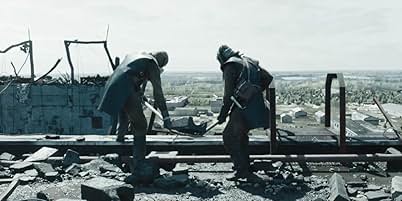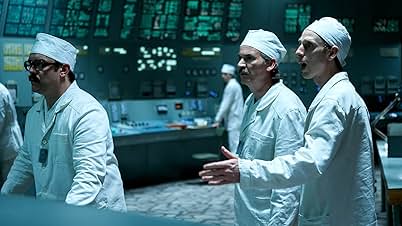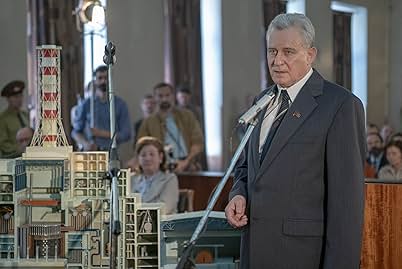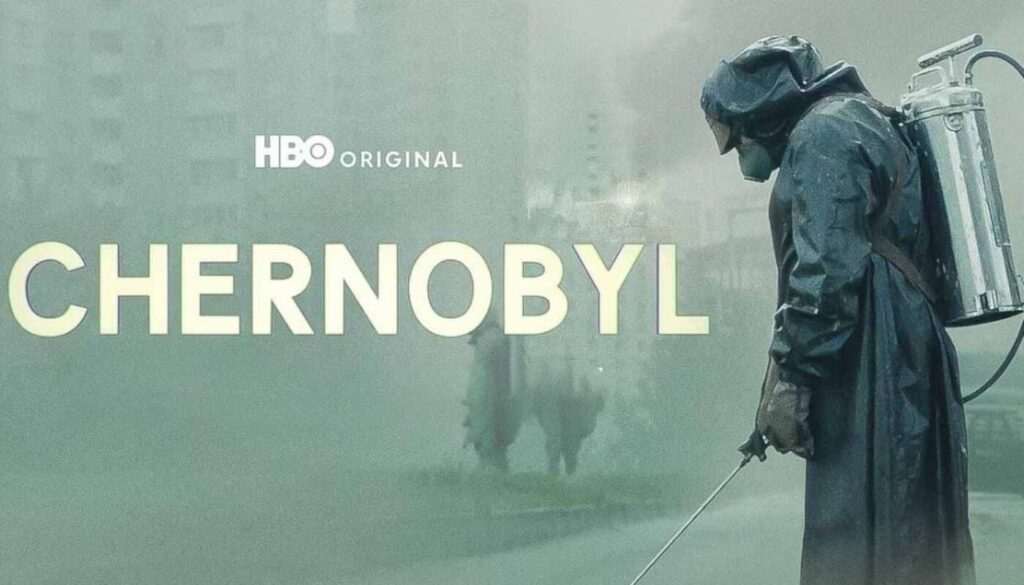The Chernobyl review reveals why this 2019 HBO miniseries delivers haunting historical drama and emotional devastation. Johan Renck’s masterful direction transforms the 1986 nuclear disaster into something genuinely terrifying and profoundly human.
What happens when you combine institutional failure with human courage in the face of unimaginable catastrophe? You get historical drama perfection. Chernobyl (2019), directed by Johan Renck, stands as one of the most compelling disaster dramas in recent television history. This intense miniseries follows the nuclear accident at the Chernobyl power plant and the heroic efforts of scientists, workers, and officials to prevent an even greater catastrophe. While the series operates on familiar disaster territory, it succeeds because it never exploits its premise—every moment of terror and sacrifice is handled with complete emotional authenticity.

Synopsis
On April 26, 1986, the Chernobyl Nuclear Power Plant in Ukraine suffers a catastrophic explosion during a safety test. The disaster releases massive amounts of radioactive material into the atmosphere, threatening to contaminate much of Europe. The series follows nuclear physicist Valery Legasov (Jared Harris), Soviet Deputy Prime Minister Boris Shcherbina (Stellan Skarsgård), and nuclear physicist Ulana Khomyuk (Emily Watson) as they work desperately to understand what happened and prevent further devastation.
With the Soviet government initially denying the severity of the accident, these dedicated scientists must navigate bureaucratic obstruction while racing against time to contain the disaster. The series follows their transformation from ordinary citizens into heroes willing to sacrifice everything to save millions of lives across Europe, no matter the personal cost.

Plot & Themes
Chernobyl operates on a devastatingly complex premise: sometimes the most profound heroism emerges from humanity’s greatest failures. The nuclear disaster serves as both historical event and metaphor for exploring deeper questions about truth, sacrifice, and the courage to confront institutional lies when everything depends on honesty.
The series’ genius lies in its careful balance between disaster elements and character development. When the protagonists face impossible choices between personal safety and public good, the show never treats their internal struggles as secondary to the spectacle. These moments work because Renck understands that true horror comes from emotional investment in the characters’ impossible situations.
Thematically, the series explores how systemic corruption can create catastrophic consequences and how individuals can find extraordinary courage when confronted with unthinkable responsibility. The characters’ journey isn’t just about containing radiation—it’s about discovering that truth and sacrifice can triumph over lies and self-preservation.

Cinematography & Visuals
The cinematography captures the apocalyptic beauty of the disaster zone with visual techniques that serve both the horror and human elements perfectly. The visual style emphasizes the contrast between the mundane bureaucracy of Soviet life and the otherworldly terror of radiation exposure, using muted colors and stark lighting to create mounting dread.
The series excels in building tension through environmental storytelling. The sequences showing the exclusion zone and the reactor’s destroyed interior demonstrate excellent use of practical effects and locations. The camera work holds on meaningful moments of fear and determination just long enough to create genuine emotional investment.
Technical details reward careful viewing. During crisis sequences, attentive viewers will notice how the characters’ growing understanding of the disaster’s scope is reflected in their increasingly desperate actions and decision-making processes.
Acting & Characters
Jared Harris delivers a compelling performance as Valery Legasov, anchoring the ensemble with his portrayal of a scientist finding courage he didn’t know he possessed. His character arc from cautious academic to determined truth-teller feels authentic and earned rather than forced.
Stellan Skarsgård provides excellent support as Boris Shcherbina, bringing both Soviet authority and growing humanity to his role. His chemistry with Harris creates a believable partnership between unlikely allies under extreme circumstances.
Emily Watson rounds out the core trio with a performance that balances scientific precision with emotional urgency. Her scenes during the most dangerous moments demonstrate genuine fear while maintaining character consistency.
The supporting cast, including Paul Ritter and the entire ensemble, brings authenticity without falling into stereotype, creating believable Soviet citizens facing an unprecedented crisis.
Direction & Screenplay
Johan Renck’s direction maintains perfect tension throughout the series’ runtime. Coming from his experience with prestige television, Renck understood that disaster films require careful pacing that builds horror without sacrificing character development. Every revelation and crisis sequence is given space to resonate emotionally.
The screenplay by Craig Mazin layers tension at multiple levels:
- Character development that explores duty and sacrifice authentically
- Historical elements that feel researched rather than sensationalized
- Horror components that build naturally from the situation
- Political beats that never feel manipulative or oversimplified
The script’s structure follows disaster conventions while subverting them through genuine character growth. This creates familiarity that makes the unexpected moments of heroism and humanity land with greater impact.
Sound & Music
The series’ score perfectly balances industrial sounds with underlying dread to create an audio landscape that mirrors the characters’ psychological journey. The music enhances rather than overwhelms the natural horror of the situation.
Sound design plays a crucial role in building tension. The way Geiger counters click with increasing intensity, and how the characters’ voices become more urgent as they grasp the disaster’s magnitude, creates an immersive experience that places viewers directly into their terrifying situation.
The use of silence deserves particular recognition. Key moments of realization and sacrifice are allowed to breathe without musical manipulation, trusting audiences to connect with the characters’ emotional reality through performance alone.
Conclusion & Verdict
Chernobyl succeeds because it treats its historical premise with intelligence and respect for both the real people involved and the audience’s capacity for complex emotions. Every element—from performance to cinematography to sound design—works in service of both horror and human dignity without sacrificing either.
Strengths:
- Exceptional ensemble cast that creates believable heroism under impossible pressure
- Authentic historical elements that feel researched and respectful
- Excellent pacing that builds dread while maintaining character focus
- Thoughtful exploration of truth and sacrifice through action rather than exposition
Minor Weaknesses:
- Some political elements feel slightly simplified for dramatic purposes
- Occasional pacing issues in exposition-heavy sequences slow momentum briefly
This series remains essential viewing for drama fans and anyone who appreciates character-driven historical storytelling. Chernobyl works for audiences who enjoyed Band of Brothers, The Crown, or All Quiet on the Western Front.
Rating: 9.5/10
Director: Johan Renck
TV Rating: TV-MA (for disturbing images, language, and mature themes)
Starring: Jared Harris, Stellan Skarsgård, Emily Watson, Paul Ritter
For more drama reviews, check out our analysis of other HBO original series. You can also explore the series’ production details at the Internet Movie Database.


